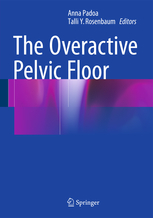
No, you are not making it up, and yes, it definitely seems like more and more sets of twins are being born than you recall in the past. In fact, the CDC has revealed that the incidence of twin births continues to rise. In 2013, 33.7 twins births occurred per thousand births, and in 2014, 33.9 occurred per thousand births. This means 135,336 sets of twins were born in 2014 (statistics for 2015 are not yet available). Approximately 75% of twin pregnancies are non-identical twins, which means that the two fetuses developed from two separately fertilized eggs. In addition, the average age of first time mothers is also on the rise. In 2013, the average age of first time mothers was 26 years old; in 2014, the average was 26.3. Simultaneously, teen births are declining, probably due to increased education and availability to contraceptive medications and devices.
Some might presume that the connection between older mothers and increased incidence of twins can be attributed to increased fertility treatment. However, an even stronger connection is hormonally mediated. A Dutch study (printed in Human Reproduction) revealed that older women have higher amounts of FSH, follicle stimulating hormone. This hormone is responsible for the development of healthy, viable eggs which can subsequently be fertilized. The study included women who were undergoing intrauterine insemination. Development of multiple follicles occurred in 105 of the approximate 500 study participants, and these women contained higher concentrations of FSH compared to the women who developed single follicles.
Apparently, the pituitary gland, which secretes FSH, steps up its game in the eleventh hour to perform its grand finale, so to speak. Scientifically speaking, this gland produces greater amounts of FSH between the ages of 38 and 48 to help the few remaining viable eggs develop. In regards to this phenomenon, Dr. Cornelius Lambalk, one of the study’s head researchers, remarked, “Advancing female age is associated with declining fertility due to decreasing numbers and quality of oocytes. But at the same time there is a distinct increase in dizygotic [non-identical] twin rates – a seemingly paradoxical phenomenon that has not been entirely explained, until now.”
If you have recently given birth to twins, or even a single baby, chances are that you may benefit from pelvic floor physical therapy. Pelvic floor physical therapy can help treat symptoms associated with recent pregnancy and delivery, including urinary incontinence due to muscle weakness, diastasis recti, and cesarean section or episiotomy related scar tightness, to name a few. If you or someone you know recently gave birth, please encourage them to consult with a pelvic floor physical therapy clinic, such as Revitalize Physical Therapy, to learn more about how this treatment can expedite the healing process. Congratulations, and I look forward to the opportunity to help you.



